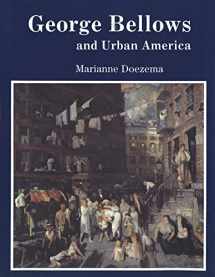
George Bellows and Urban America
Book details
Summary
Description
George Bellows’s spirited and virile paintings of New York in the early decades of the twentieth century celebrated the city’s bigness and bolness. Although these works clearly challenged the conservative practices of the National Academy and linked Bellows with the anti-academic art of Robert Henri and the Eight, they were highly popular, even with arch-conservatives. In this book Marianne Doezema explores why it was that Bellows’s paintings―despite being considered coarse in technique and subject matter―were acclaimed by critics and patrons, by conservatives, progressives, and radicals alike.
Doezema focuses on three of Bellows’s principal urban themes: the excavation for Pennsylvania Station, prizefights, and tenement life on the Lower East Side. Drawing on journals and periodicals of the period, she discusses how the prominent, often newsworthy motifs painted by Bellows evoked particular associations and meanings for his contemporaries. Arguing that the implicit message of these paintings was distinctly unrevolutionary, she shows that the excavation paintings celebrated industrialization and urbanization, the boxing pictures presented the sport as brutal and its fans as bloodthirsty, and the depictions of the Lower East Side conformed to a moralistic, middle-class view of poverty. In many of Bellows’s subject pictures of this era, says Doezema, the artist approached issues of changing moral and social values in a way that not only seemed congenial to many members of his audience but also verified their attitudes and preconceptions about urban life in America.


We would LOVE it if you could help us and other readers by reviewing the book
Book review



